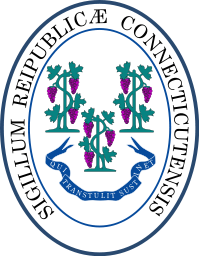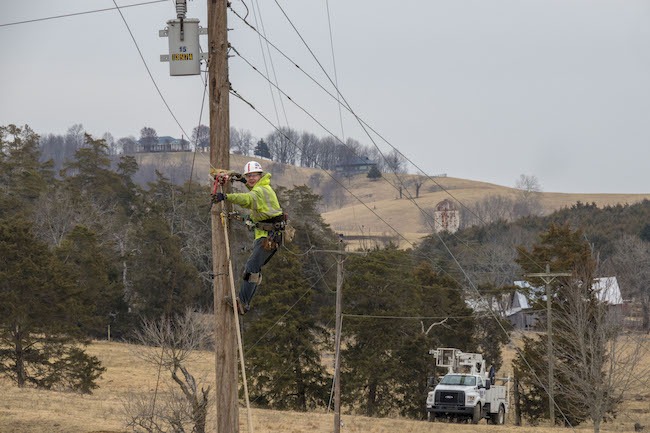In the past few years, states around the U.S. have made incremental changes in their laws to ease restrictions on municipalities and cooperatives interested in developing high-quality Internet network infrastructure. When communities in Connecticut wanted to exercise their right to space on utility poles at no cost, however, pole owners objected. After a drawn out review of the state’s “Municipal Gain” law, local communities have finally obtained the decision they’ve pursued to develop cost-effective publicly owned fiber optic municipal networks.
Process, Procedure, and PURA
In 2016, the state’s Office of Consumer Counsel (OCC) turned to Connecticut’s Public Utility Regulatory Agency (PURA) and asked the agency to clarify a 110-year-old state law regarding utility poles in municipal rights-of-way (ROW). In Connecticut, about 900,000 of the poles are scattered throughout the state and are prime locations for fiber optic cables for improved connectivity. Most of the poles belong to Verizon, Frontier, one of the state’s electric providers, or are jointly owned by two or more of them.
The Municipal Gain Law was created in the early 1900s to give local communities reserved space with no attachment fee on the poles in order to hang telegraph wires. As telephone and other technologies evolved that required wiring, municipalities wanted to take advantage of the space. There were several lawsuits between pole owners and municipalities over the years with pole owner interests usually losing out to the needs of the public. By 2013, it became clear that amending the law to allow communities to access the municipal gain space “for any use” made sense and the state legislature made the statutory language change. Local communities saw the change as an opportunity to string fiber in the space, establishing publicly owned infrastructure on which they could partner with private sector providers for improved local connectivity.
 Incumbent Internet access companies saw it as a threat to their monopolies and mobilized to stop the trend. Incumbent ISPs began with tactics such as pole attachment agreements with strict terms that limited municipalities’ ability to complete a project in a timely manner. Others illegally confined fiber attachments to networks that only provided “government use” in order to prevent competition.
Incumbent Internet access companies saw it as a threat to their monopolies and mobilized to stop the trend. Incumbent ISPs began with tactics such as pole attachment agreements with strict terms that limited municipalities’ ability to complete a project in a timely manner. Others illegally confined fiber attachments to networks that only provided “government use” in order to prevent competition.
There were other problems with the old law. Its rules were unclear and the confusion negatively impacted community network projects by opening the door for possible delays in make-ready work. As we’ve reported in the past, delaying pole preparation can be the death knell to community network projects that depend on public support and enthusiasm. Long delays drive up costs and increase impatience in a community, which is why incumbents trying to prevent competition have been in no hurry to prepare the municipal gain space for municipal fiber.
Th OCC and the State Broadband Office (SBO) hoped that PURA would be able to clear up the confusion and establish rules so municipalities across the state could move forward.
Everybody Wants to Know
In addition to the decision sought by the OCC and SBO, Frontier, the Communications Workers of America, and the New England Cable and Telecommunications Association jointly filed a petition seeking a declaratory judgement. They wanted PURA to rule definitively whether or not the municipal gain space could be used for fiber optic deployment.
In a disappointing May 2018 decision [PDF], PURA finally ruled that the reserved space could only be used for fiber deployment intended for “public purposes.” Large corporate ISPs applauded the decision that would prevent local communities from taking control where those same companies had failed them. Elin Swanson Katz, who worked as Consumer Counsel in OCC at the time, said:
“We are very disappointed in the decision. It ignores the plain language of the statute, and by deciding that [municipal gain] cannot be used by our cities and towns to provide broadband to those affected by the Digital Divide, denies our municipalities a tool provided by the legislature for just that purpose.”
The decision attracted the ire of legislators who thought “for any purpose” was clear when they changed the statute in 2013. The Connecticut Council of Municipalities (CCM) and several other municipalities individually filed suit against the PURA ruling. The OCC also became involved in the state Superior Court. The suits were combined.
In a November 2018 press release [PDF], Katz said:
“We will fight for consumers to have greater access and more options for affordable, high-speed broadband Internet services, all the way to the Supreme Court if necessary. Every citizen in the state should have not just one provider, but ideally multiple providers, so there is competition on price, speed, and service. Having access to the Internet is essential for economy prosperity for both our citizens and our state. I applaud municipal officials who want to take actions to make sure every member of their community has access.”
Legislature No, Court Yes
During the 2019 legislative session, the state Senate considered SB 846 [PDF], which would have reversed the PURA decision. The bill passed favorably through the Energy and Technology Committee, but went no farther.
Where PURA and the State Legislature failed to stand by local communities, the Connecticut Superior Court solved the dilemma for local communities. In November, Judge Richard Shortall concluded that municipalities have the right, per state law, to develop Internet network infrastructure and to do so via fiber optic cables that they place on poles or in conduits within their their own borders.
 Judge Shortall decided that PURA went beyond its authority when the agency determined how municipalities could use the municipal gain space. Shortall also noted that the 2013 change to the Municipal Gain Law – “for any purpose” – was clear in its meaning but that PURA misconstrued it otherwise.
Judge Shortall decided that PURA went beyond its authority when the agency determined how municipalities could use the municipal gain space. Shortall also noted that the 2013 change to the Municipal Gain Law – “for any purpose” – was clear in its meaning but that PURA misconstrued it otherwise.
The CCM and the towns of New Haven, Manchester, and west Hartford, which had all participated in the lawsuit, celebrated the November decision. “The decision is a win for municipalities and their property taxpayers, and represents a clear, fair and reasonable reading of state statutes,” CCM Executive Director Joe DeLong said.
What the Future Holds
Judge Shortall’s decision opens the door for local communities who are interested in deploying publicly owned fiber optic network infrastructure and want to take advantage of the municipal gain space. With the increasing innovations tied to the use of fiber that go beyond Fiber-to-the-Home (FTTH), such as smart city applications, potential for 5G, and the ever present need for better connectivity for municipal facilities, the decision has big implications.
In many Connecticut communities residents and businesses are hurting for options and in the more rural towns, some premises still use dial-up or don’t have any Internet access. In a recent episode of the Where We Live podcast from Connecticut Public Radio, host Lucy Nalpathanchil spoke with Jessica Fowler, Chair of Northwest Connect and Sharon, Connecticut resident, and Joe Rosenthal from the OCC. They discussed the decision and the implications, including expectations for an appeal from either PURA or one of the players in the telecom industry.
Image credit U.S. Department of AgriculturePreston Keres/Office of Communications-Photography Services Center [Public domain]
![]() Nov. 2018 Press Release from OCC Regarding PURA Decision
Nov. 2018 Press Release from OCC Regarding PURA Decision
This article was originally published on ILSR’s MuniNetworks.org. Read the original here.





